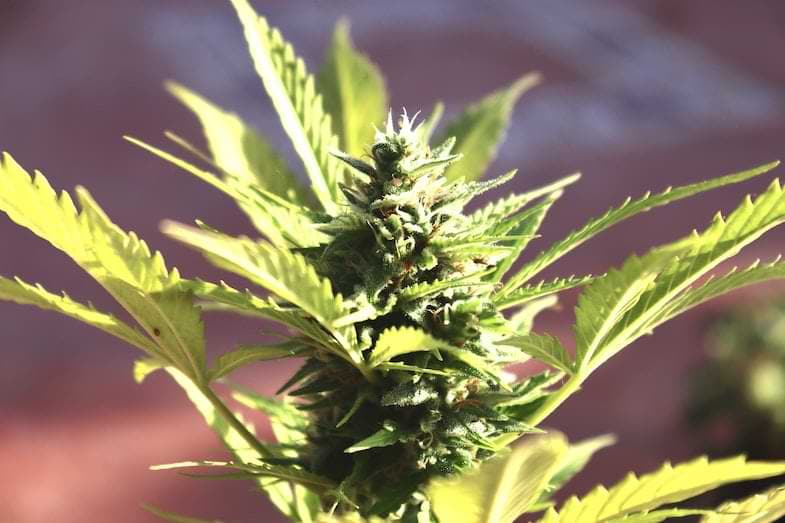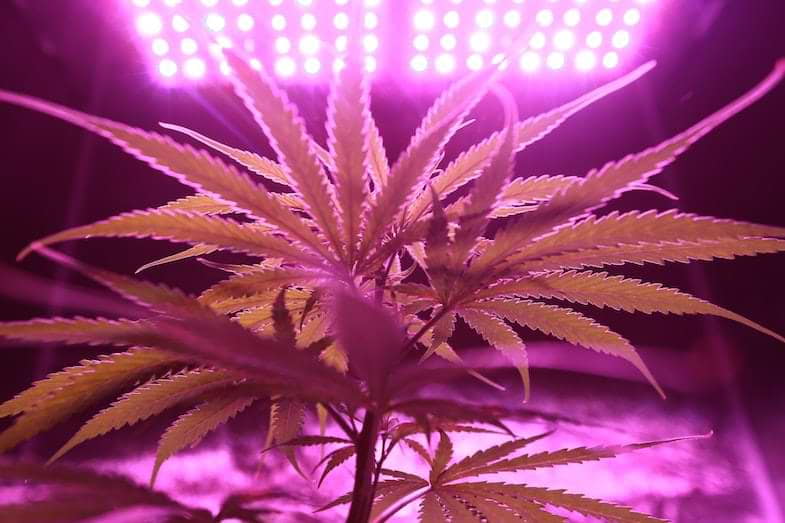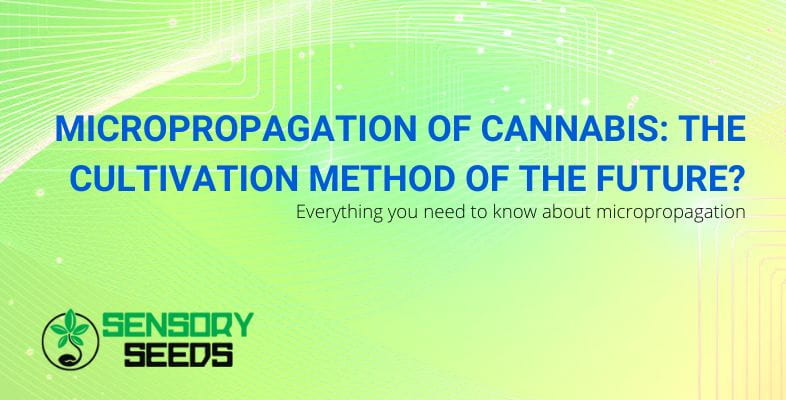Published on: 06/02/2023
Everything you need to know about micropropagation
Among the various cultivation techniques, it seems that micropropagation is arousing a strong interest among the most passionate about cannabis.
But what exactly does it consist of? What are its pros and cons?
In today’s article we will answer these questions.


Micropropagation of cannabis: history and origin of this technique
Micropropagation is one of the most widespread applications of in vitro plant reproduction. This technique and related cultivation methods are used to multiply genetically identical plants (called clones) on a massive scale, in small spaces and in short periods of time, combining some of the advantages of both classical plant reproduction systems.
It is one of the biotechnological inbreeding techniques that has shown the greatest development in recent years, as it allows to obtain thousands of identical plants from small sections of a mother plant, called explants.
But where does this technique that is gaining more and more popularity come from?
It was first discovered in 1898 by a German botanist, Gottlieb Haberlandt.
To grow plants, Haberlandt used various plant tissues such as leaves, pith, epidermis, and epidermal hairs. All the initial experiments were fruitful for a few months, but the plants didn’t survive long; it was only in the 1930s that important components (such as vitamin B and auxin) for root growth were discovered, which improved plant tissue culture.
Sir Gottlieb Haberlandt’s original idea, known as ‘totipotentiality’ – all plant cells can regenerate into complete plants – was presented in 1902. In 1904 he described the history of C3 and C4 photosynthesis research.
💡Note: Tissue culture has been studied since the early 1800s but was not introduced to plants until the late 1800s. Also, the father of tissue culture is Ross Granville Harrison, an American zoologist, while the father of tissue culture plant, also known as the father of cell culture, is Gottlieb Haberlandt.
In fact, the term micropropagation was first defined in 1986 and today represents an important technology for reproduction, selection and disease control.
At this point the question arises: does this method also work for cannabis cultivation?
Read also: Everything you need to know about cannabis breeding and its evolution
Current state of cannabis micropropagation
As we said earlier, micropropagation is the set of techniques and methods used to multiply plants asexually. From a fragment of a mother plant (explant), micropropagation produces clones, plants genetically identical to the mother plant which are grown in vitro in a growth chamber where they continue to develop with the aim of rooting and planting, or to be fragmented again to produce new plants.
But let’s get to the heart of the matter.
Micropropagation could revolutionize the traditional techniques of reproduction of marijuana plants, as it allows for mass production, multiplying the number of plants at great speed and exponentially.
Let’s start, for example, from a hypothetical mother plant from which ten explants have been obtained; let’s say that, after a month of growth, each explant can be divided into two; this would mean a total of twenty explants in a month and, since the growth is exponential (each new explant will become two), in a year the total number of new plants would be 40,960, all obtained from the same mother plant and genetically identical to it.
Incredible, isn’t it?
Unlike the traditional cloning method, where a cutting requires an entire branch of a mother plant, in vitro cultivation allows you to create new cannabis plants from leaves, buds or small pieces of a plant, in order to obtain a large number of new plants from a single mother plant, which can be kept in a limited state of growth for a long time.
However, the adoption of this technique in cannabis is still very recent.
The in vitro response of plants differs between species and even between strains, and studies of in vitro cultivation of cannabis are scarce and difficult to access.


Cannabis micropropagation: advantages and disadvantages
These are the main advantages of in vitro and micropropagation over traditional propagation by cuttings and seed
- reduced space: cultivation takes place in small pots that can be stored vertically, greatly reducing the storage area required for traditional cuttings;
- reduced maintenance: this type of cultivation does not require excessive attention, nor does it take time to water or care once the process has been completed. The growing medium is changed every 4-6 weeks and only the growth process needs attention;
- long shelf life: plants can be kept in a limited growth state for long periods of time;
- mass production: the number of plants multiplies exponentially;
- rapid processing: plant growth is rapid, shoots begin to appear in 15-20 days, allowing new plants to be created in just over a month;
- healthy plants: disease and pest problems are avoided;
- uniform offspring: exact replicas of the mother plant are obtained;
- economic savings: here we are only referring to large-scale cultivation. The quantities of products used in in vitro cultivation are much smaller than those required for conventional cultivation, and the yield is much higher. In vitro cultivation does not involve investment in irrigation or targeted products such as substrates, fertilisers, pesticides, supplements, etc., and saves space and energy.
Despite the advantages of in vitro cultivation, this method also has several disadvantages that are difficult to overcome.
One of them is complexity.
The technology, methods, techniques and materials required for in vitro cultivation are laboratory-based and not accessible to everyone. A certain knowledge of microbiology and great attention to detail are required to achieve optimal results.
Secondly, there is the lack of protocols to consider.
The fact that each species and strain responds differently to in vitro cultivation and that there is still no standard protocol for cannabis cultivation makes this even more difficult.
Furthermore, micropropagation is not very feasible on a small scale. The investment of time, money and resources required for this type of small-scale cultivation makes it unprofitable for small producers and home growers.
Read also: Does CBD really fight THC? Let’s clarify
Conclusions
In this article we have discussed the micropropagation or in vitro technique, a method that seems to be catching on in cannabis cultivation. However, the studies are still at an embryonic stage, so it will have to wait before cannabis growers can practise it routinely.









